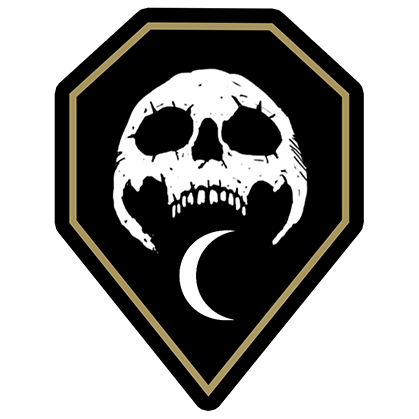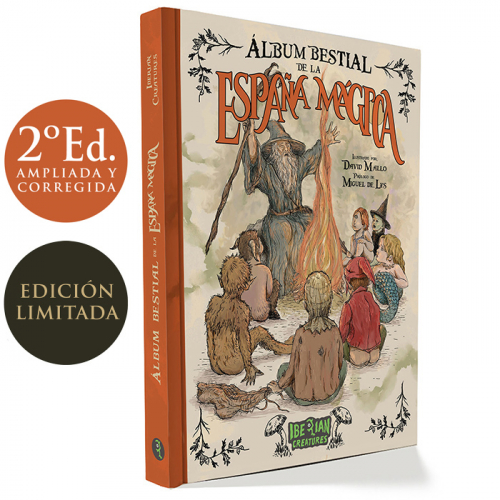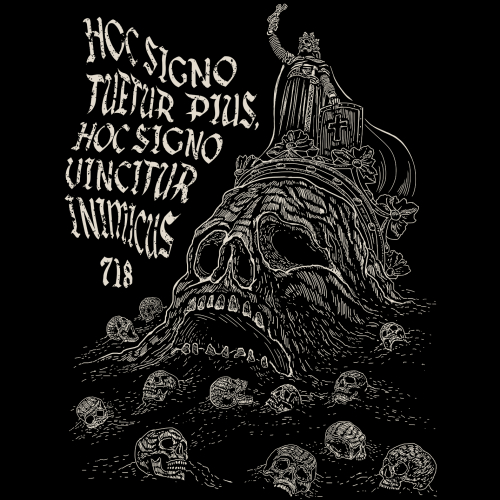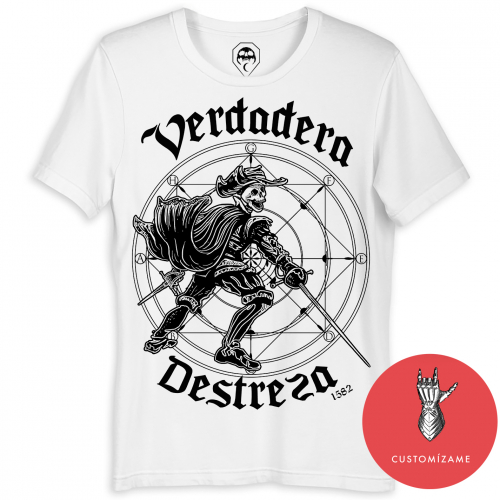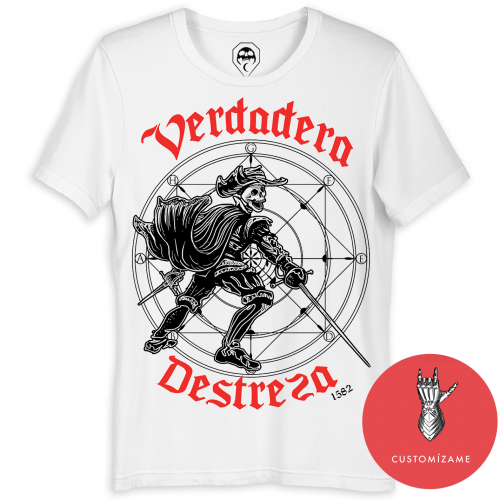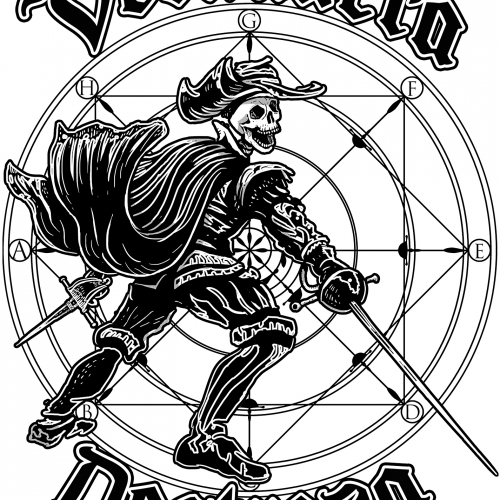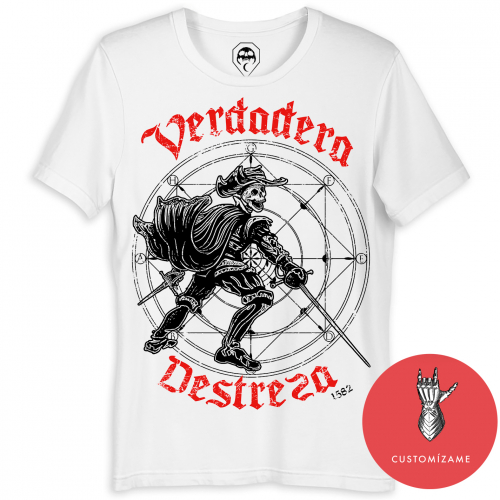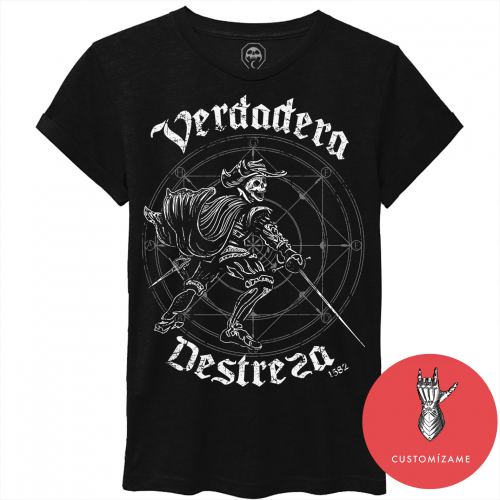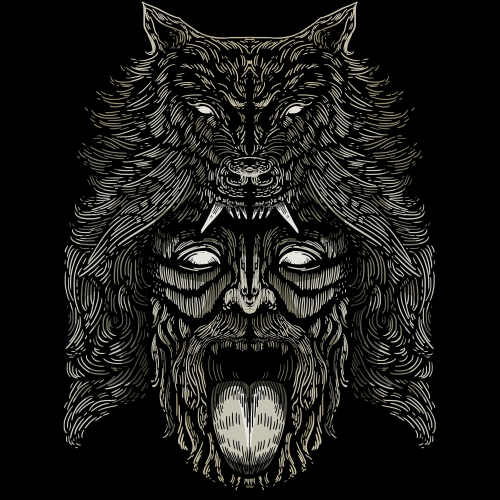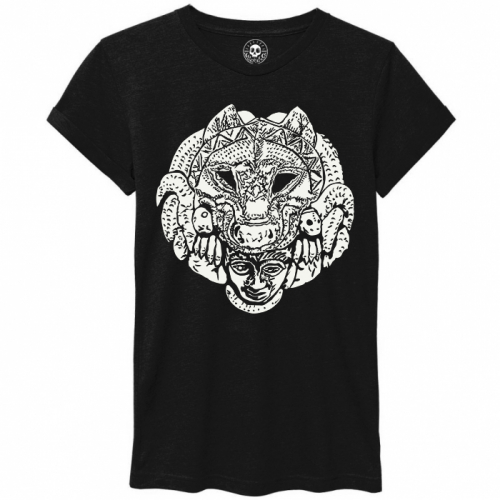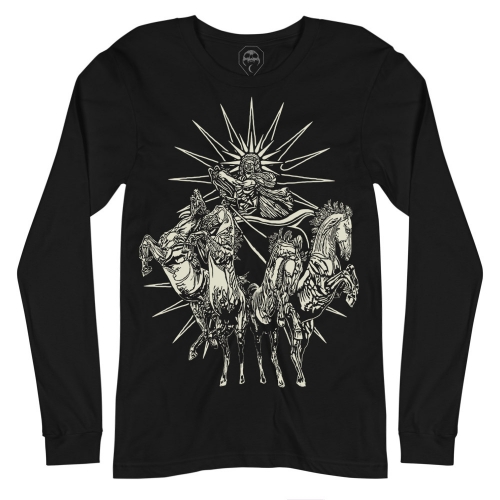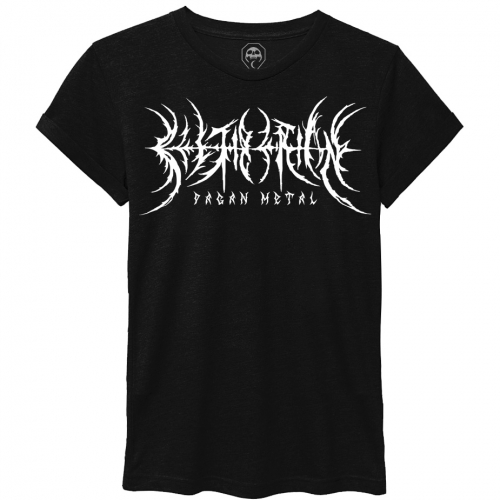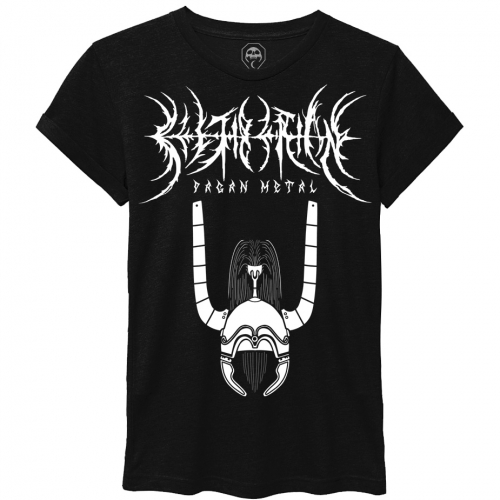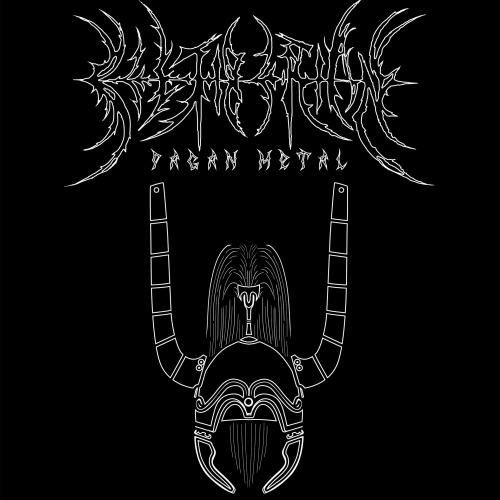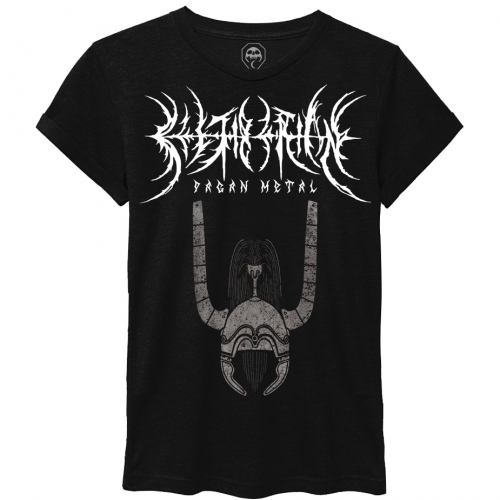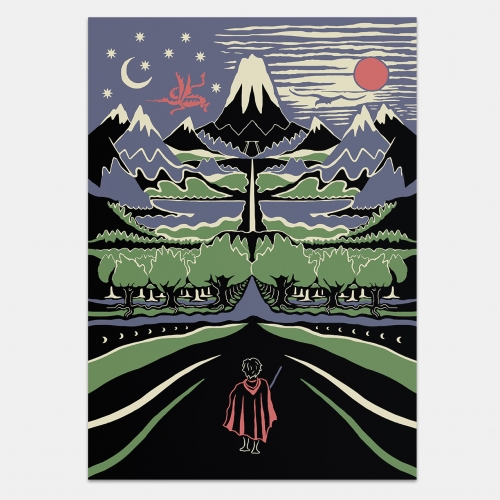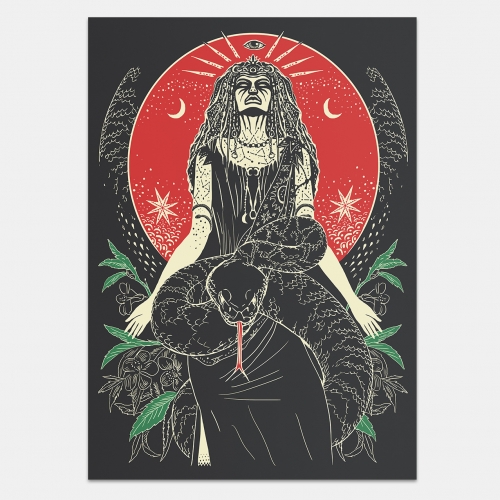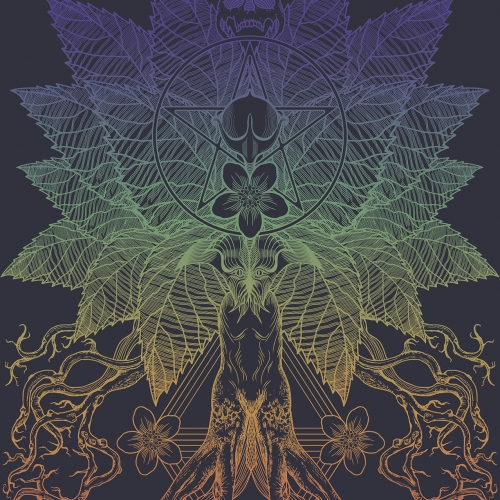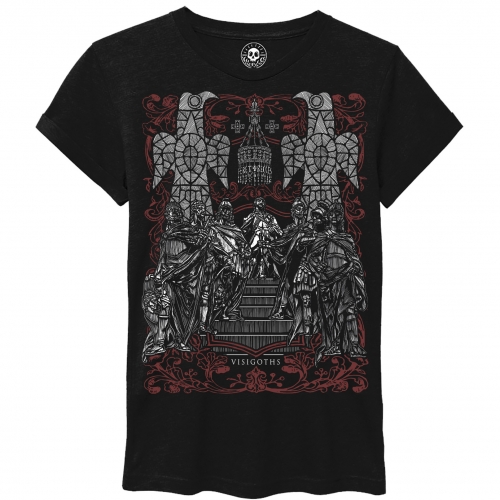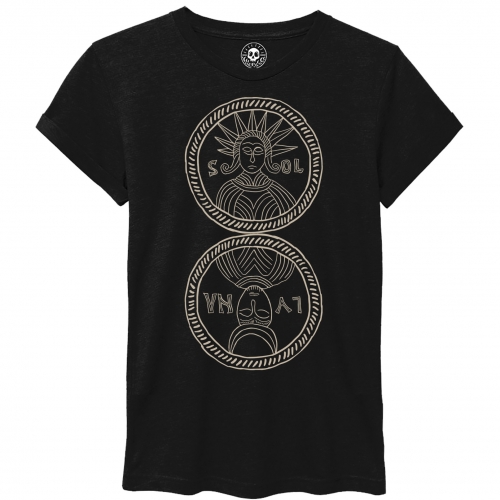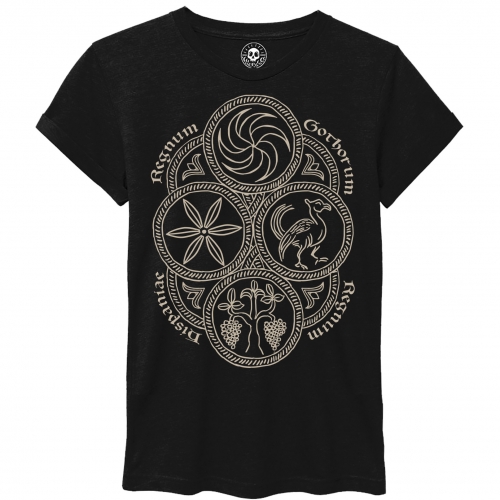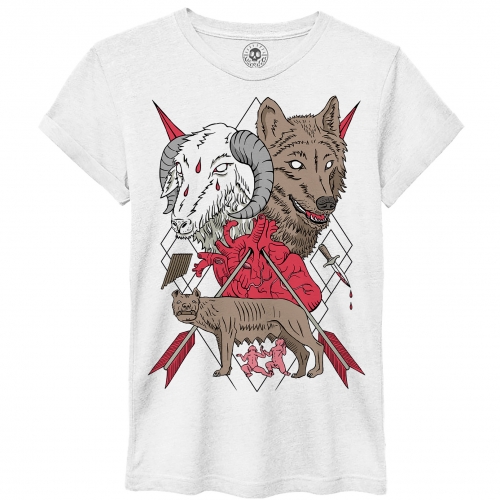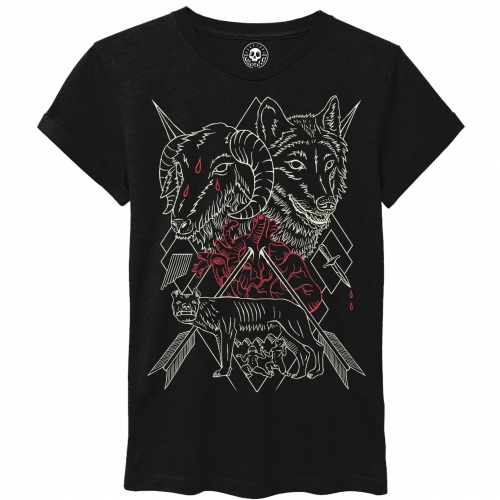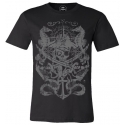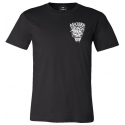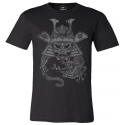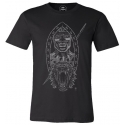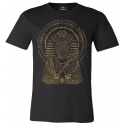There are 89 products.
Active filters
- Categories: Naturaleza
Deo Vaelico - Black T-shirt
«The war reached us all, in the heat of battle, we well knew the sovereign wolf God and his ferocious consecrated warrior brotherhoods that, through magical rituals, acquired fury for combat, assuming the faculties of the wolf and after his death triumphant, Vaélico, thus referred to by the Vetones, accompanies them on their journey to the beyond.»
- New
copy of Wolf warrior - Black T-shirt
The Iberians gained fame for their fighting prowess, but their writing systems, their trade, and their art show that they were much more than great warriors. Their mother tongue "Iberian" was spoken from the Hérault River (France) to Porcuna (Jaén) and they left thousands of inscriptions written in an original alphabet of signs that was a mystery for centuries that little by little is deciphering ... Written on coins , lead sheet, amphorae, mosaic, stone stele, silver crockery or trousseau, painted and engraved ceramics, copper plates, silver trousseau, walls ... Its enormous diffusion in the peninsula reveals to us how consolidated it was. The same alphabet was also shared with the Lusitanian and Proto-Basque languages.
[In the image the head of the wolf on the pectoral disc of the armor of the Iberian warriors]
Wolf warrior - Black T-shirt
The representation of the wolf in Iberian iconography, as a cult totemic animal, with strong roots in pastoral populations, related to myths and religious symbolism, represents ardor, heroism and warrior mysticism. Combat scenes between wolf and man are common, some symbolize death threat, lineage of power, protection in combat ... and the cult of the night, the path or initiation rite, in the passage to the afterlife, lupus as a guide in the afterlife ...
So recurrent in Iberian art, we find it in the sculptural ensembles of "El Pajarillo", in the Elche-Archena style ceramics, in the mints of the Iltirta and Iltiraka mint, in the "Copa del Carnassier", in the "Torso de Guerrero de la Alcudia"... and in the "Pátera de Perotito" where a young man, his hands are raised in a ritual position, is devoured by the wolf, merging with him, in his transit with the beyond ...
Because the wolf is also death, dying to live, dying to resurrect, when we are eaten we will renew our spirit, as a different being that is reborn as a new man. A journey of the initiate to the world of spirits, a descent to the bottom of the caverns, twinned with a wolf guide who will transfer us his great qualities...
Celtiberian wolf devouring the sun - Black T-shirt
The image comes from the bronze Celtiberian hospitality Tsera in the shape of a wolf in zenith perspective that appeared in Burgos, related to a Celtic myth of the end of the world, known as the myth of the “Wolf that devours the Sun”.
The representation of the wolf in Iberian iconography, as a cult totemic animal, with strong roots in pastoral populations, related to myths and religious symbolism, represents ardor, heroism and warrior mysticism. Combat scenes between wolf and man are common, some symbolize death threat, lineage of power, protection in combat ... and the cult of the night, the path or initiation rite, in the passage to the afterlife, lupus as a guide in the afterlife ...
So recurrent in Iberian art, we find it in the sculptural ensembles of "El Pajarillo", in the Elche-Archena style ceramics, in the mints of the Iltirta and Iltiraka mint, in the "Copa del Carnassier", in the "Torso de Guerrero de la Alcudia"... and in the "Pátera de Perotito" where a young man, his hands are raised in a ritual position, is devoured by the wolf, merging with him, in his transit with the beyond ...
Because the wolf is also death, dying to live, dying to resurrect, when we are eaten we will renew our spirit, as a different being that is reborn as a new man. A journey of the initiate to the world of spirits, a descent to the bottom of the caverns, twinned with a wolf guide who will transfer us his great qualities...
Sol Invictus, the invincible Solar God - Black Long Sleeve T-Shirt
February 27, 380, the emperor Theodosius abolished the religion and festival of the Sun Invictus by the famous edict of Thessalonica. Until then the Romans worshiped the Sun god during the Republic, and with greater prominence in the Imperial era, since the gradual entry of different religions of salvation of monotheistic tendency, such as Christianity and Mithrism, was giving greater weight to the power of the star king, the one who conquered the darkness ...
Emperor Aurelian made it official on December 25 as the day of the birth of the Undefeated Sun (the main divinity of the Roman pantheon at that time) back in the year 274 and later Juliano the Apostate would declare Helios (Greek equivalent) as the only divinity, and would try to prevent the spread of growing Christianity.
Finally, during a long process of syncretism, both the Festival of the Birth of the Invincible Sun "Dies Natalis Solis Invicti" held after the Winter Solstice, when daylight increased, as well as many other acts and celebrations were gradually reconverted. Paganism would come to an end, a new stage would begin with a victorious sun reborn in the arms of a Galilean.
Celtiberian Pagan Metal IV - Black T-Shirt
Our tribute to all those bands that in the mid and late 90s created an autochthonous genre, "Celtiberian Black Metal". Distancing themselves from Viking metal, those groups permeated the national scene with their own identity based on the beliefs of the native peoples of ancient Iberia, their lyrics bring us closer to Celtiberian mythology, legends, heroes, gods, epics, nature, customs, rites, Iberian landscapes and the paganism of our pre-Roman culture.
Influenced by Norwegian and Polish black bands, the "barbarians" Nazgul was born in Madrid back in 1995 by the hand of its founder Defernos and the guitarist Thorgul, an emblematic reference band that defined the concept and was one of the germs of the later bands of "Celtiberian Pagan Metal".
In parallel, the Cantabrian Erun Dagoth creates a melodic and epic Death / Black musical project with Celtic Folk elements called CrystalMoors, whose themes breathe history - the Cantabrian wars for example -, mythology and nature of Cantabria - over time and outside the ranks of Crystalmoors, Erun creates a very interesting solo project called Briargh, straddling epic fantasy, paganism and Celticism. In 2018 they joined forces with the Hordak band - we who do not come from the BM, but from the power of Manowar, Running Wild, Blind Guardian or Helloween, we have discovered them with "Father" and they have conquered us! - to create the split "Árguma / Ophiusa ". Within this cultural paganism they have shared stages with bands of neofolk and dark folk roots, whose compositions sink in ancestral folklore and the magical beliefs of the Iberian peoples, such as Keltika Hispanna whose Black / Death influences are appreciated for example in their album "Terror Romanorvm ".
In this CBM tour we have come across hundreds of bands that have dealt with pre-Christian Iberian autochthonous cultures such as Aiumeen Basoa (1994), Numen (1997), Lux Divina (1998), Berserk (1998), Nakkiga (1999), Cyhiriaeth (2000), Omendark (2001), Carcharoth (2002) or Forestdome (2002).
Therefore, this small design is used almost in crude, to remember this genre and those bands that have raised and carried the flame of the spirit of the pre-Roman peoples of Iberia.
Celtiberian Pagan Metal III - Black T-Shirt
Our tribute to all those bands that in the mid and late 90s created an autochthonous genre, "Celtiberian Black Metal". Distancing themselves from Viking metal, those groups permeated the national scene with their own identity based on the beliefs of the native peoples of ancient Iberia, their lyrics bring us closer to Celtiberian mythology, legends, heroes, gods, epics, nature, customs, rites, Iberian landscapes and the paganism of our pre-Roman culture.
Influenced by Norwegian and Polish black bands, the "barbarians" Nazgul was born in Madrid back in 1995 by the hand of its founder Defernos and the guitarist Thorgul, an emblematic reference band that defined the concept and was one of the germs of the later bands of "Celtiberian Pagan Metal".
In parallel, the Cantabrian Erun Dagoth creates a melodic and epic Death / Black musical project with Celtic Folk elements called CrystalMoors, whose themes breathe history - the Cantabrian wars for example -, mythology and nature of Cantabria - over time and outside the ranks of Crystalmoors, Erun creates a very interesting solo project called Briargh, straddling epic fantasy, paganism and Celticism. In 2018 they joined forces with the Hordak band - we who do not come from the BM, but from the power of Manowar, Running Wild, Blind Guardian or Helloween, we have discovered them with "Father" and they have conquered us! - to create the split "Árguma / Ophiusa ". Within this cultural paganism they have shared stages with bands of neofolk and dark folk roots, whose compositions sink in ancestral folklore and the magical beliefs of the Iberian peoples, such as Keltika Hispanna whose Black / Death influences are appreciated for example in their album "Terror Romanorvm ".
In this CBM tour we have come across hundreds of bands that have dealt with pre-Christian Iberian autochthonous cultures such as Aiumeen Basoa (1994), Numen (1997), Lux Divina (1998), Berserk (1998), Nakkiga (1999), Cyhiriaeth (2000), Omendark (2001), Carcharoth (2002) or Forestdome (2002).
Therefore, this small design is used almost in crude, to remember this genre and those bands that have raised and carried the flame of the spirit of the pre-Roman peoples of Iberia.
Celtiberian Pagan Metal II - Black T-Shirt
Our tribute to all those bands that in the mid and late 90s created an autochthonous genre, "Celtiberian Black Metal". Distancing themselves from Viking metal, those groups permeated the national scene with their own identity based on the beliefs of the native peoples of ancient Iberia, their lyrics bring us closer to Celtiberian mythology, legends, heroes, gods, epics, nature, customs, rites, Iberian landscapes and the paganism of our pre-Roman culture.
Influenced by Norwegian and Polish black bands, the "barbarians" Nazgul was born in Madrid back in 1995 by the hand of its founder Defernos and the guitarist Thorgul, an emblematic reference band that defined the concept and was one of the germs of the later bands of "Celtiberian Pagan Metal".
In parallel, the Cantabrian Erun Dagoth creates a melodic and epic Death / Black musical project with Celtic Folk elements called CrystalMoors, whose themes breathe history - the Cantabrian wars for example -, mythology and nature of Cantabria - over time and outside the ranks of Crystalmoors, Erun creates a very interesting solo project called Briargh, straddling epic fantasy, paganism and Celticism. In 2018 they joined forces with the Hordak band - we who do not come from the BM, but from the power of Manowar, Running Wild, Blind Guardian or Helloween, we have discovered them with "Father" and they have conquered us! - to create the split "Árguma / Ophiusa ". Within this cultural paganism they have shared stages with bands of neofolk and dark folk roots, whose compositions sink in ancestral folklore and the magical beliefs of the Iberian peoples, such as Keltika Hispanna whose Black / Death influences are appreciated for example in their album "Terror Romanorvm ".
In this CBM tour we have come across hundreds of bands that have dealt with pre-Christian Iberian autochthonous cultures such as Aiumeen Basoa (1994), Numen (1997), Lux Divina (1998), Berserk (1998), Nakkiga (1999), Cyhiriaeth (2000), Omendark (2001), Carcharoth (2002) or Forestdome (2002).
Therefore, this small design is used almost in crude, to remember this genre and those bands that have raised and carried the flame of the spirit of the pre-Roman peoples of Iberia.
Celtiberian Pagan Metal I - Black T-Shirt
Our tribute to all those bands that in the mid and late 90s created an autochthonous genre, "Celtiberian Black Metal". Distancing themselves from Viking metal, those groups permeated the national scene with their own identity based on the beliefs of the native peoples of ancient Iberia, their lyrics bring us closer to Celtiberian mythology, legends, heroes, gods, epics, nature, customs, rites, Iberian landscapes and the paganism of our pre-Roman culture.
Influenced by Norwegian and Polish black bands, the "barbarians" Nazgul was born in Madrid back in 1995 by the hand of its founder Defernos and the guitarist Thorgul, an emblematic reference band that defined the concept and was one of the germs of the later bands of "Celtiberian Pagan Metal".
In parallel, the Cantabrian Erun Dagoth creates a melodic and epic Death / Black musical project with Celtic Folk elements called CrystalMoors, whose themes breathe history - the Cantabrian wars for example -, mythology and nature of Cantabria - over time and outside the ranks of Crystalmoors, Erun creates a very interesting solo project called Briargh, straddling epic fantasy, paganism and Celticism. In 2018 they joined forces with the Hordak band - we who do not come from the BM, but from the power of Manowar, Running Wild, Blind Guardian or Helloween, we have discovered them with "Father" and they have conquered us! - to create the split "Árguma / Ophiusa ". Within this cultural paganism they have shared stages with bands of neofolk and dark folk roots, whose compositions sink in ancestral folklore and the magical beliefs of the Iberian peoples, such as Keltika Hispanna whose Black / Death influences are appreciated for example in their album "Terror Romanorvm ".
In this CBM tour we have come across hundreds of bands that have dealt with pre-Christian Iberian autochthonous cultures such as Aiumeen Basoa (1994), Numen (1997), Lux Divina (1998), Berserk (1998), Nakkiga (1999), Cyhiriaeth (2000), Omendark (2001), Carcharoth (2002) or Forestdome (2002).
Therefore, this small design is used almost in crude, to remember this genre and those bands that have raised and carried the flame of the spirit of the pre-Roman peoples of Iberia.
Poster Tolkien
Matte poster made of matte, thick and resistant paper. Giclee printed on acid-free paper resulting in brilliant colors. The size is 70cm wide by 100cm high, with a paper thickness of 0.26mm
Poster Lovecraft
Matte poster made of matte, thick and resistant paper. Giclee printed on acid-free paper resulting in brilliant colors. The size is 70cm wide by 100cm high, with a paper thickness of 0.26mm
Poster Circe/medea/Casandra
Matte poster made of matte, thick and resistant paper. Giclee printed on acid-free paper resulting in brilliant colors. The size is 70cm wide by 100cm high, with a paper thickness of 0.26mm
Poster Mandrake
Matte poster made of matte, thick and resistant paper. Giclee printed on acid-free paper resulting in brilliant colors. The size is 70cm wide by 100cm high, with a paper thickness of 0.26mm
Visigoths - Black T-shirt
In 409 the first Germanic invasion took place in the peninsula, Swabians, Vandals and Alans entered Hispania. The Arian Visigoths, with Alaric in command, sacked Rome (410) and headed, led by Ataulfo, towards France and Iberia. After the fall of the Western Roman Empire (476) and the great defeat of Vouillé (507), the Regnum Gothorum of Tolosa fell, which definitively displaced the Visigoths towards Hispania. There is a rapprochement between the barbarian Goths and the civilized Roman aristocracy. Confrontations, friendship and alliances that favor the birth and formation of Regnum Gothorum and the strengthening of the Hispano-pagoda monarchy of Toledo. Leovigildo will be the true organizer of the political unity that seeks the fusion between the Hispano-Roman and Gothic populations. His son Recaredo will achieve the desired legislative and religious unity in the III Council of Toledo (589), and his descendants will settle the Regnum Hispaniae with the territorial unity...
Visigoths. Between lights and darkness - Black T-shirt
The son of the wolf, the Goth Wulfilias, converted the Visigoths of Germania to the Arian religion. Upon their arrival in Iberia, they came into contact with the pagan pre-Roman and Spanish-Roman peoples, with the newcomers Vandals, Swabians and Alans - who also practiced Arianism - and with the Jews who had settled since the 6th century. A heterogeneous society is configured where different pre-Christian beliefs coexist alongside primitive Christianity - Manichaeism, Arianism and Gnosticism. The Council of Nicea in 325 will condemn the Arian heresies, the subsequent syncretism process, the conversion of Recaredo and the final unification of the Third Council of Toledo (589) will displace all religious tendencies in favor of Catholicism.
However, in that Visigoth Hispania sacred and perhaps heretical elements will appear, such as those that appeared in the mysterious hermitage of Santa María de Quintanillas de las Viñas in Burgos. We speak of “pagan” reliefs such as the undefeated sun, the spirit of life, and the crescent Moon, the mother life, of oriental Manichean reminiscences, capable of separating light from darkness, good from evil ... perhaps Gnostic inscriptions perhaps last outbreaks of Arian heresy ... In any case, despite the assimilation of Christian orthodoxy, we find in the ruins secrets of a pagan spirituality so latent in the stones, in the art and in the soul of this people ...
Regnum Gothorum - Black T-shirt
In 409 the first Germanic invasion took place in the peninsula, Swabians, Vandals and Alans entered Hispania. The Arian Visigoths, with Alaric in command, sacked Rome (410) and headed, led by Ataulfo, towards France and Iberia. After the fall of the Western Roman Empire (476) and the great defeat of Vouillé (507), the Regnum Gothorum of Tolosa fell, which definitively displaced the Visigoths towards Hispania. There is a rapprochement between the barbarian Goths and the civilized Roman aristocracy. Confrontations, friendship and alliances that favor the birth and formation of Regnum Gothorum and the strengthening of the Hispano-pagoda monarchy of Toledo. Leovigildo will be the true organizer of the political unity that seeks the fusion between the Hispano-Roman and Gothic populations. His son Recaredo will achieve the desired legislative and religious unity in the III Council of Toledo (589), and his descendants will settle the Regnum Hispaniae with the territorial unity...
Lupercalia III - White T-shirt
If you have seen women running through the streets from one place to another being chased by some half naked guys in wolf skins who whipped and whipped them with bloody strips of ram, do not be alarmed! they are just remembering an old pagan festival, something lewd that yes, but it was a sacred rite of purification and fecundity celebrated in Ancient Rome every February 15 called the lupercales or Lupercalia.
The word comes from lupus, that is, wolf and its Roman god of fertility and male sexuality Fauno Luperco (Greek mythological deity Pan, the one who protected the wolf), a strange, hairy being, with legs and horns of a goat and large, pointed ears with a voracious and infinite sexual appetite.
One of the legends tells that in the ancient city of Alba Longa, the evil Amulio after deposing his brother Numitor from the throne, ordered to kill all his first-born, turning his daughter Rea Silvia into a virgin so that she would not have successors, but The god of war Mars was enraptured by the girl and they procreated the brothers Romulus and Remus, who managed to escape from the clutches of their uncle Amulio, managing to survive in the forests thanks to the woodpecker and the she-wolf Luperca who nursed and raised them. Years later they would return to their homeland to take revenge and kill him.
Due to the shortage of fertility and women in Rome, the oracle of the goddess Juno announced that the mothers of Lazio would be fertilized by a male goat. For this purpose, a ritual was held every February 15 in the Lupercal cave - there where Romulus and Remus were suckled by the she-wolf - where the most virile young men were selected - those ephebos who, on their initiation path, had lived in the forests as human wolves—, called loberos or luperci (friends of the wolf), and their faces were marked with the blood of a dog and a sacrificed male goat.
To make the rite more fun and interesting, virile members were created in the form of strips with the skin of the goat ... The libido to the surface, the lustful participants launched themselves in the carnal search for women eager to be impregnated, who agreed in a Shameless sexual play, whipping and spanking included, in a depurifying act that increased fertility.
Christianity erased with a stroke of the pen this fun bacchanal, so beneficial to health and to the women of Ancient Rome, moving it to February 14, Valentine's Day.
Lupercalia II - Black T-shirt
If you have seen women running through the streets from one place to another being chased by some half naked guys in wolf skins who whipped and whipped them with bloody strips of ram, do not be alarmed! they are just remembering an old pagan festival, something lewd that yes, but it was a sacred rite of purification and fecundity celebrated in Ancient Rome every February 15 called the lupercales or Lupercalia.
The word comes from lupus, that is, wolf and its Roman god of fertility and male sexuality Fauno Luperco (Greek mythological deity Pan, the one who protected the wolf), a strange, hairy being, with legs and horns of a goat and large, pointed ears with a voracious and infinite sexual appetite.
One of the legends tells that in the ancient city of Alba Longa, the evil Amulio after deposing his brother Numitor from the throne, ordered to kill all his first-born, turning his daughter Rea Silvia into a virgin so that she would not have successors, but The god of war Mars was enraptured by the girl and they procreated the brothers Romulus and Remus, who managed to escape from the clutches of their uncle Amulio, managing to survive in the forests thanks to the woodpecker and the she-wolf Luperca who nursed and raised them. Years later they would return to their homeland to take revenge and kill him.
Due to the shortage of fertility and women in Rome, the oracle of the goddess Juno announced that the mothers of Lazio would be fertilized by a male goat. For this purpose, a ritual was held every February 15 in the Lupercal cave - there where Romulus and Remus were suckled by the she-wolf - where the most virile young men were selected - those ephebos who, on their initiation path, had lived in the forests as human wolves—, called loberos or luperci (friends of the wolf), and their faces were marked with the blood of a dog and a sacrificed male goat.
To make the rite more fun and interesting, virile members were created in the form of strips with the skin of the goat ... The libido to the surface, the lustful participants launched themselves in the carnal search for women eager to be impregnated, who agreed in a Shameless sexual play, whipping and spanking included, in a depurifying act that increased fertility.
Christianity erased with a stroke of the pen this fun bacchanal, so beneficial to health and to the women of Ancient Rome, moving it to February 14, Valentine's Day.
